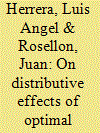|
|
|
Sort Order |
|
|
|
Items / Page
|
|
|
|
|
|
|
| Srl | Item |
| 1 |
ID:
132656


|
|
|
|
|
| Publication |
2014.
|
| Summary/Abstract |
Residential photovoltaic (PV) systems were twice as expensive in the United States as in Germany (median of $5.29/W vs. $2.59/W) in 2012. This price discrepancy stems primarily from differences in non-hardware or "soft" costs between the two countries, which can only in part be explained by differences in cumulative market size and associated learning. A survey of German PV installers was deployed to collect granular data on PV soft costs in Germany, and the results are compared to those of a similar survey of U.S. PV installers. Non-module hardware costs and all analyzed soft costs are lower in Germany, especially for customer acquisition, installation labor, and profit/overhead costs, but also for expenses related to permitting, interconnection, and inspection procedures. Additional costs occur in the United States due to state and local sales taxes, smaller average system sizes, and longer project-development times. To reduce the identified additional costs of residential PV systems, the United States could introduce policies that enable a robust and lasting market while minimizing market fragmentation. Regularly declining incentives offering a transparent and certain value proposition-combined with simple interconnection, permitting, and inspection requirements-might help accelerate PV cost reductions in the United States.
|
|
|
|
|
|
|
|
|
|
|
|
|
|
|
|
| 2 |
ID:
132779


|
|
|
|
|
| Publication |
2014.
|
| Summary/Abstract |
Simultaneous rapid rise in both the world oil and agricultural commodity prices have increased interest in determining price transmission from oil prices to those of agricultural commodities. However, although a lot of the empirical research has studied the relation between oil price changes and economic activity, it is surprising that little research has been conducted on the relationship between oil price shocks and the large-size emerging industrial countries agricultural market. Therefore, the main goal of this study is that we are try to use the more detail and new China's weekly data which from 2004/9 to 2012/9 to fill this gap. This study examines the short and long-run interdependence between China fuel oil prices and the average of different kinds of key agricultural commodity prices in China. To this end, the Toda-Yamamoto causality approach and impulse response analysis method are applied to identification of the long and short-run interrelationships. In contrast to lots of the traditional causality analysis indicates that the oil prices and the agricultural commodity prices do not influence each other, our result is mix: we have inferred that the fluctuation of fuel oil price has a short-run effect on the dynamics of agricultural products in China; however, there are no significant in the long-run effects.
|
|
|
|
|
|
|
|
|
|
|
|
|
|
|
|
| 3 |
ID:
132682


|
|
|
|
|
| Publication |
2014.
|
| Summary/Abstract |
Coal-fired power plants in China have emitted multiple pollutants including sulfur dioxide, nitrogen oxides and fine particulates, contributing to serious environmental impairments and human health issues. To meet ambient air quality standards, the installation of effective pollution control technologies are required and consequently, the cost of installing or retrofitting control technologies is an important economic and political concern. A multi-pollutant control cost model, CoST CE, is developed to calculate the cost of multi-pollutant control strategies in the Yangtze River Delta region (YRD) of China, adopting an LP algorithm to optimize the sorting of control technology costs and quickly obtain a solution. The output shows that total costs will increase along with emission abatement. Meanwhile, the slope becomes steeper as greater emission reductions are pursued, due to the need to install highly effective, but expensive, technologies like SCR and FF. Moreover, it is evident that the cost curve shapes, maximum abatement potential and total cost for the three provinces in the YRD region are quite different due to differences in power plant type and technologies, current emission levels and existing pollution controls. The results from this study can aid policy makers to develop cost-effective control strategies for the power sector.
|
|
|
|
|
|
|
|
|
|
|
|
|
|
|
|
| 4 |
ID:
132630


|
|
|
|
|
| Publication |
2014.
|
| Summary/Abstract |
The recent low CO2 prices in the European Union Emission Trading Scheme (EU ETS) have triggered a discussion whether the EU ETS needs to be adjusted. We study the effects of CO2 price floors and a price ceiling on the dynamic investment pathway of two interlinked electricity markets (loosely based on Great Britain, which already has introduced a price floor, and on Central Western Europe). Using an agent-based electricity market simulation with endogenous investment and a CO2 market (including banking), we analyse the cross-border effects of national policies as well as system-wide policy options.
A common, moderate CO2 auction reserve price results in a more continuous decarbonisation pathway. This reduces CO2 price volatility and the occurrence of carbon shortage price periods, as well as the average cost to consumers. A price ceiling can shield consumers from extreme price shocks. These price restrictions do not cause a large risk of an overall emissions overshoot in the long run. A national price floor lowers the cost to consumers in the other zone; the larger the zone with the price floor, the stronger the effect. Price floors that are too high lead to inefficiencies in investment choices and to higher consumer costs.
|
|
|
|
|
|
|
|
|
|
|
|
|
|
|
|
| 5 |
ID:
132658


|
|
|
|
|
| Publication |
2014.
|
| Summary/Abstract |
Renewable energy technologies (RETs) have attracted significant public attention for several reasons, the most important being that they are clean alternative energy sources that help reduce greenhouse gas emissions. To increase the probability that RETs will be successful, it is essential to reduce the uncertainty about its adoption with accurate long-term demand forecasting. This study develops a diffusion model that incorporates the effect of competitive interrelationships among renewable sources to forecast the growth pattern of five RETs: solar photovoltaic, wind power, and fuel cell in the electric power sector, and solar thermal and geothermal energy in the heating sector. The 2-step forecasting procedure is based on the Bayus, (1993. Manage. Sci. 39, 11, 1319-1333) price function and a diffusion model suggested by Hahn et al. (1994. Marketing Sci. 13, 3, 224-247). In an empirical analysis, the model is applied to the South Korean renewable energy market.
|
|
|
|
|
|
|
|
|
|
|
|
|
|
|
|
| 6 |
ID:
132621


|
|
|
|
|
| Publication |
2014.
|
| Summary/Abstract |
The Australian Renewable Energy Target (RET) has spurred significant investment in renewable electricity generation, notably wind power, over the past decade. This paper considers distributional implications of the RET for different energy users. Using time-series regression, we show that the increasing amount of wind energy has placed considerable downward pressure on wholesale electricity prices through the so-called merit order effect. On the other hand, RET costs are passed on to consumers in the form of retail electricity price premiums. Our findings highlight likely significant redistributive transfers between different energy user classes under current RET arrangements. In particular, some energy-intensive industries are benefiting from lower wholesale electricity prices whilst being largely exempted from contributing to the costs of the scheme. By contrast, many households are paying significant RET pass through costs whilst not necessarily benefiting from lower wholesale prices. A more equitable distribution of RET costs and benefits could be achieved by reviewing the scope and extent of industry exemptions and ensuring that methodologies to estimate wholesale price components in regulated electricity tariffs reflect more closely actual market conditions. More generally, these findings support the growing international appreciation that policy makers need to integrate distributional assessments into policy design and implementation.
|
|
|
|
|
|
|
|
|
|
|
|
|
|
|
|
| 7 |
ID:
132618


|
|
|
|
|
| Publication |
2014.
|
| Summary/Abstract |
The reuse of Li-ion EV batteries for energy storage systems (ESS) in stationary settings is a promising technology to support improved management of demand and supply of electricity. In this paper, MatLAB simulation of a residential energy profile and regulated cost structure is used to analyze the feasibility of and cost savings from repurposing an EV battery unit for peak-shifting. in situ residential energy storage can contribute to the implementation of a smart grid by supporting the reduction of demand during typical peak use periods. Use of an ESS increases household energy use but potentially improves economic effectiveness and reduces greenhouse gas emissions. The research supports the use of financial incentives for Li-ion battery reuse in ESS, including lower energy rates and reduced auxiliary fees.
|
|
|
|
|
|
|
|
|
|
|
|
|
|
|
|
| 8 |
ID:
127202


|
|
|
|
|
| Publication |
2014.
|
| Summary/Abstract |
The present work aims to examine the strategic decision of future electricity generation mix considering, together with all other factors, the effect of the external cost associated with the available power generation technology options, not only during their operation but also during their whole life cycle. The analysis has been performed by integrating the Life Cycle Assessment concept into a linear programming model for the yearly decisions on which option should be used to minimize the electricity generation cost. The model has been applied for the case of Greece for the years 2012-2050 and has led to several interesting results. Firstly, most of the new generating capacity should be renewable (mostly biomass and wind), while natural gas is usually the only conventional fuel technology chosen. If externalities are considered, wind energy increases its share and hydro-power replaces significant amounts of biomass-generated energy. Furthermore, a sensitivity analysis has been performed. One of the most important findings is that natural gas increases its contribution when externalities are increased. Summing-up, external cost has been found to be a significant percentage of the total electricity generation cost for some energy sources, therefore significantly changing the ranking order of cost-competitiveness for the energy sources examined
|
|
|
|
|
|
|
|
|
|
|
|
|
|
|
|
| 9 |
ID:
132657


|
|
|
|
|
| Publication |
2014.
|
| Summary/Abstract |
Biofuels production has experienced rapid growth worldwide as one of the several strategies to promote green energy economies. Indeed, climate change mitigation and energy security have been frequent rationales behind biofuel policies, but biofuels production could generate negative impacts, such as additional demand for feedstocks, and therefore for land on which to grow them, with a consequent increase in food commodity prices. In this context, this paper examines the effect of biofuels and other economic and financial factors on daily returns of a group of commodity futures prices using Generalized Autoregressive Conditional Heteroskedasticity (GARCH) family models in univariate and multivariate settings. The results show that a complex of drivers are relevant in explaining commodity futures returns; more precisely, the Standard and Poor×s (S&P) 500 positively affects commodity markets, while the US/Euro exchange rate brings about a decline in commodity returns. It turns out, in addition, that energy market returns are significant in explaining commodity returns on a daily basis, while monetary liquidity is not. This would imply that biofuel policy should be carefully monitored in order to avoid excessive first-generation subsidization, which would trigger a fuel vs. food conflict.
|
|
|
|
|
|
|
|
|
|
|
|
|
|
|
|
| 10 |
ID:
132593


|
|
|
|
|
| Publication |
2014.
|
| Summary/Abstract |
Feed-in tariffs (FiTs) offer renewable energy developers significant investor certainty but sometimes at the cost of being misaligned with generation costs. Reverse FiT auctions, where the FiT rights for a predetermined capacity are auctioned, can overcome this problem but can be plagued by non-delivery risks, particularly of competitively priced proposals. In 2012 and 2013 the Australian Capital Territory (ACT) Government in Australia conducted a FiT reverse auction for 40 MW of large-scale solar generating capacity, the first such auction undertaken in the country. The auction was highly competitive in relation to price and demonstrating low delivery risks. Proposal capital costs, particularly engineering, procurement and construction costs, as well as internal rates of return, were lower than expected. The auction process revealed limited land availability for large-scale solar developments in the ACT as well as a significant perceived sovereign risk issue. The auction process was designed to mitigate non-delivery risk by requiring proposals to be pre-qualified on the basis of delivery risk, before considering FiT pricing. The scheme is likely to be used by the ACT Government to support further large-scale renewable energy development as part of its greenhouse gas reduction strategy which is underpinned by a 90-per cent-by-2020 renewable energy target.
|
|
|
|
|
|
|
|
|
|
|
|
|
|
|
|
| 11 |
ID:
132653


|
|
|
|
|
| Publication |
2014.
|
| Summary/Abstract |
Gross profitability margin (difference between retail and wholesale prices) for unleaded petrol exhibits substantial variations across 108 cities, towns and regional centres in Australia. This paper examines if such variations (averaged during 2007-2012) can be explained by (a) transport costs proxied by the distance between retailers and wholesalers; (b) the size of the retail market; (c) market competition proxied by the number of cars in the vicinity of the retailers; (d) dummy variables capturing other qualitative attributes associated with the retailers' locations. Three cross-sectional regressions are estimated but only one successfully passes all diagnostic tests. By identifying a number of locations exhibiting excessive profit margins, the results of this paper enhance the efficiency and transparency of petrol pricing in the retail market. It is found that the extent of excessive profiteering in Western Australia (WA) and South Australia (SA) were lower than other Australian states and territories. This important finding can be explained by a strong presence of independent petrol stations in SA and the successful price-monitoring performance of FuelWatch in WA.
|
|
|
|
|
|
|
|
|
|
|
|
|
|
|
|
| 12 |
ID:
132654


|
|
|
|
|
| Publication |
2014.
|
| Summary/Abstract |
To date, the distributive implications of incentive regulation on electricity transmission networks have not been explicitly studied in the literature. More specifically, the parameters that a regulator might use to achieve distributive efficiency under price-cap regulation have not yet been identified. To discern these parameters is the motivation for the research presented in this paper. We study how different weight parameters affect the distributive characteristics of optimal price-cap incentive regulation for electricity transmission. We find that a regulator×s use of ideal (Laspeyres) weights tends to be more beneficial for the Transco (consumers) than for consumers (the Transco).
|
|
|
|
|
|
|
|
|
|
|
|
|
|
|
|
| 13 |
ID:
132612


|
|
|
|
|
| Publication |
2014.
|
| Summary/Abstract |
Hong Kong has almost perfect electricity reliability, the result of substantial investments ultimately financed by electricity consumers who may be willing to accept lower reliability in exchange for lower bills. But consumers with high outage costs are likely to reject the reliability reduction. Our ordered-logit regression analysis of the responses by 1876 households to a telephone survey conducted in June 2013 indicates that Hong Kong residents exhibit a statistically-significant preference for their existing service reliability and rate. Moreover, the average residential cost estimate for a 1-h outage is US$45 (HK$350), topping the estimates reported in 10 of the 11 studies published in the last 10 years. The policy implication is that absent additional compelling evidence, Hong Kong should not reduce its service reliability.
|
|
|
|
|
|
|
|
|
|
|
|
|
|
|
|
| 14 |
ID:
130756


|
|
|
|
|
| Publication |
2014.
|
| Summary/Abstract |
The U.S. Navy has no overall requirements process for designing a Fleet, and it needs one-desperately.
The Navy finds itself caught in the perfect storm between the cost constraints of the national budget environment and the capability demands of globally proliferating counter-naval technologies. At present projected budget levels, if we continue our current processes for setting the design requirements of future ships and aircraft, the service's size will shrink over the next two decades to about two-thirds of today's force-structure goals of 306 ships and 3,000 aircraft. Unless we find more efficient ways to generate forward deployments out of this fleet, the Navy's forward posture-its key contribution to national strategy and joint U.S. military capability-will shrink to far less than the 100 deployed ships typically used to deliver global capability. This is not the right path.
It is time to rethink how we will design the future Fleet in a way that rebalances affordability, platform capability, and deployment processes. We must build it as a whole instead of continuing to "let it happen" one platform requirements decision at a time.
|
|
|
|
|
|
|
|
|
|
|
|
|
|
|
|
| 15 |
ID:
132641


|
|
|
|
|
| Publication |
2014.
|
| Summary/Abstract |
A brisk building boom of hydropower mega-dams is underway from China to Brazil. Whether benefits of new dams will outweigh costs remains unresolved despite contentious debates. We investigate this question with the "outside view" or "reference class forecasting" based on literature on decision-making under uncertainty in psychology. We find overwhelming evidence that budgets are systematically biased below actual costs of large hydropower dams-excluding inflation, substantial debt servicing, environmental, and social costs. Using the largest and most reliable reference data of its kind and multilevel statistical techniques applied to large dams for the first time, we were successful in fitting parsimonious models to predict cost and schedule overruns. The outside view suggests that in most countries large hydropower dams will be too costly in absolute terms and take too long to build to deliver a positive risk-adjusted return unless suitable risk management measures outlined in this paper can be affordably provided. Policymakers, particularly in developing countries, are advised to prefer agile energy alternatives that can be built over shorter time horizons to energy megaprojects.
|
|
|
|
|
|
|
|
|
|
|
|
|
|
|
|
|
|
|
|
|